Something has always drawn me to games where you only die in one hit. There’s this electrifying sensation that comes with needing to perfect a level or section because dying is the alternative. Ghostrunner managed to capture this feeling while remaining a solid first-person platformer on top of that.
If anything, it was the first 3D title to give me that kind of tension since the only other games to scratch that itch were Hotline Miami and Katana Zero. Ghostrunner wasn’t perfect, but I was ready for a sequel by the time it was announced.
Now the aptly named Ghostrunner 2 is here, and with it that rush so few games captured for me. At first, I wasn’t sure what to think of it, but playing its demo reeled me in. That snippet felt like Ghostrunner but more, and that was all I could ask for.
The question remains whether that excitement transfers to the full game, and I’m happy to say it does! Ghostrunner 2 is an improvement in many regards. Unfortunately, some issues dull its blade enough to prevent it from achieving its full potential.
Ghostrunner 2 (PC [reviewed], PS5, Xbox Series X|S)
Developer: One More Level
Publisher: 505 Games
Released: October 26, 2023
MSRP: $39.99
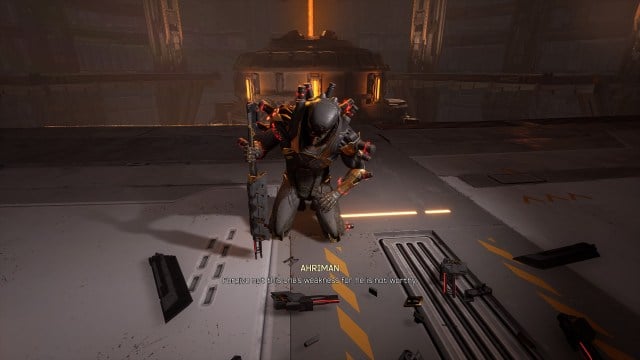
Gliding through enemies like a bloody ghost
Ghostrunner 2‘s premise is simple. You play as Jack, a special cyborg boy called a Ghostrunner. He’s basically an ultra-slick and deadly guy who only needs a sword to cut down swaths of foes.
He was the only one as far as anyone knew in the last game, but now things are different. A group known as the Asura consists of several more Ghostrunners who emerged from hiding. These guys, led by a figure named Mitra, are every bit as fast and deadly as Jack, and they’re out for blood.
The plot essentially exists to give Jack a reason to kill bad guys, and that’s perfectly okay. Story was never the focus in Ghostrunner and that applies to its sequel. That said, the narrative isn’t bad at all and the world has some interesting lore. It’s just that looking cool while killing guys is the clear appeal here.
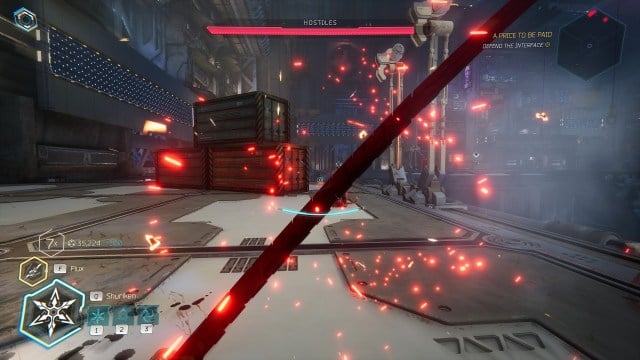
Becoming the ultimate glass cyber ninja
Slashing through baddies feels as amazing as the first game if not more so. Jack has more tools, but his skillset never overwhelms since only three factors matter. These are the sword, a secondary attack, and an ultimate ability.
Ultimately the best tools are Jack’s sword and his reflexes because they’re both superb. Similar to the first title, players will cut through foes easier than a hot knife through butter as they become blood fountains after a single hit. Ranged attacks like the shuriken secondary attack and Flux ultimate ability also kill many enemies with one blow. Bosses are the exception to this rule, but thankfully they never feel too tanky.
Every encounter remains stressful in its own way because Jack goes down in one hit too. You can earn a shield to protect you from a hit, but only if you maintain a 10x combo.
This would be an infuriating experience if Ghostrunner 2 didn’t play amazingly, and thankfully it does. Inputs on a keyboard and mouse are precise, and deaths hardly felt unfair. Don’t get me wrong, Ghostrunner 2 is challenging, but it never is quite brutal.
The controls even feel fine when playing on my Steam Deck. I divided my playtime between the Deck and my desktop, and it felt enjoyable with either platform’s controls. Both systems performed decently, though Valve’s portable ran almost constantly below 60 FPS.
If Ghostrunner 2 was just slicing up bad guys in a cyberpunk tower, I’d be all for it. It’s the breaks from that where some of its cracks show more often.
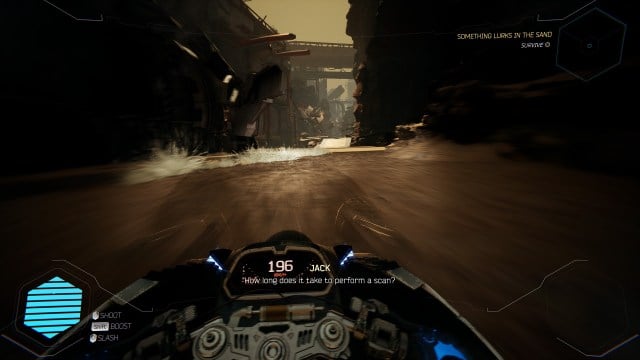
How’d my bike get there?!
Ghostrunner 2‘s biggest change is its motorcycle. I loved driving this thing when I played the demo. Ghostrunner is a fast game, so zooming at 250mph on a motorcycle is a perfect match.
Unfortunately, some concepts look better on paper than they do in practice. And while I like the bike, I wanted to love it. When it works it delivers some genuinely exhilarating moments. When it doesn’t, things get awkward.
I cannot emphasize enough how many times this goddamned thing got stuck on the world’s geometry, either killing me or forcing me to reload my checkpoint. Sometimes it awkwardly plants itself on the edge of a destroyed highway or even in a decrepit building. It even got stuck inside a floor at one point.
This issue might not be specific to the bike because I noticed Jack ran into similar circumstances. For example, miscalculated jumps often didn’t kill him but trapped him in a piece of the environment. It’s just more noticeable with the bike since I kept getting a vain sense of hope that I’d get it unstuck.
Fortunately, this is the only glaring issue I encountered in terms of bugs. Ghostrunner 2 is overall a well-polished title in my experience, so these issues with its physics and geometry just stand out.
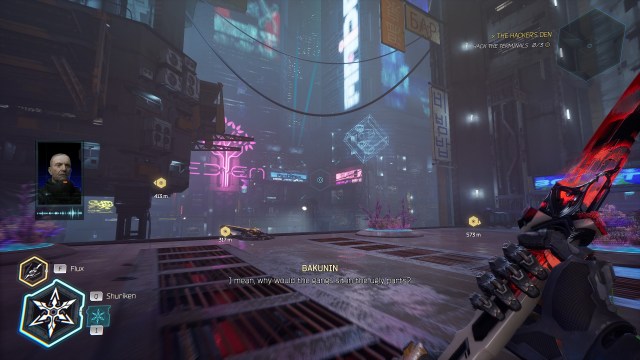
A beautiful and (mostly) dead world
Ghostrunner 2 shines in its graphical presentation. Whether in Dharma’s enclosed neon-soaked environments or the dead outside world, it’s a visual feast.
The opening hours within the tower are more or less an upscaled version of what we saw in Ghostrunner, and that’s a compliment. It’s a massive and imposing megastructure where all humanity lives, and it certainly feels that way in both titles.
A swathe of neon lights and signs flood the inside, but it’s wide enough that I occasionally forget that it’s not perpetual nighttime rather than being inside a horribly massive building. Contrast this with the wasteland just outside of it, which gives a completely different vibe. The destroyed roads and a lack of life feel so lonely by comparison.
Both settings work as well as they do for a surprisingly similar reason, and that’s how littered they are. Trash and grime litter Dharma Tower while debris does the same for the wasteland. It gives the impression that people exist or have existed in both places with little care for the world around them.
Dharma is definitely more varied than the outside sections, however. Sometimes the dingy and run-down parts are replaced by more opulent areas or even industrial ones. A particularly striking section is set within a colossal church that almost looks ripped from Warhammer 40K.
Helping sell the world further is the excellent electronic score. Several artists contributed to the soundtrack, with Gost and Dan Terminus sticking out to me. Their synthwave tracks always keep the adrenaline flowing.
Where Ghostrunner 2‘s presentation falters is with the character models. Some look fine, such as Jack and several Asura members, but others like common enemies and Jack’s allies have a plastic look. They’re actually well-designed with distinct and detailed appearances. It’s just something about the lighting or textures that make them seem uncanny.
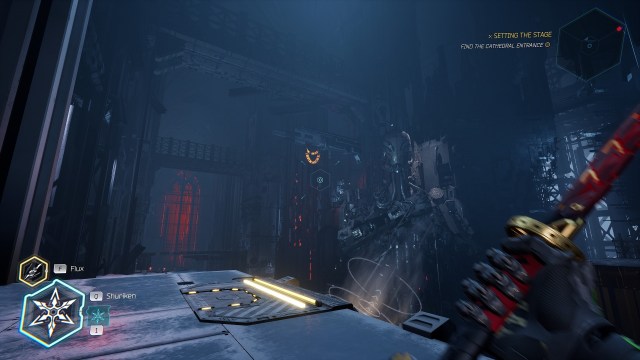
Clean cuts make for a lean experience
Ghostrunner 2 isn’t a particularly long game. According to my Steam page, I clocked in around 7 hours from the start until I rolled credits. This was after collecting all the audio logs and artifacts within the world, finding most of the memory shards, and completing several optional challenges.
There’s also Rougerunner.exe, a separate side mode taking players through branching sets of levels. These are divided into stages that increase in difficulty the further you go. It’s a simple rogue-lite, but is a fun deviation from the main game. For me, it tested my mastery of the core mechanics while adding some element of luck with the power-ups. This comes with some unlockable cosmetics that you can use in the main game.
It’s kind of a relief to play a title with such brevity. When driving the motorcycle into the open wasteland, I worried its pace would grind to a halt to open exploration up. In practice, these sections were nice breathers in a title that otherwise is always at 100 within missions. Having a few minutes to drive around somewhat felt refreshing before returning to the chaos. The feeling was cut short whenever the bike got stuck and forced me to reload my checkpoint, but I saw the developer’s intent.
All I can say after finishing Ghostrunner 2 is that I want more. Considering that was my reaction at the end of the original Ghostrunner, I can say One More Level created a solid follow-up. Both titles might have had “meh” narratives, but the core gameplay is so fantastic I honestly didn’t care while I was playing. At its best, Ghostrunner 2 is the first game but better, and at its worst, it’s just a little less polished than its predecessor.
[This review is based on a retail build of the game provided by the publisher.]

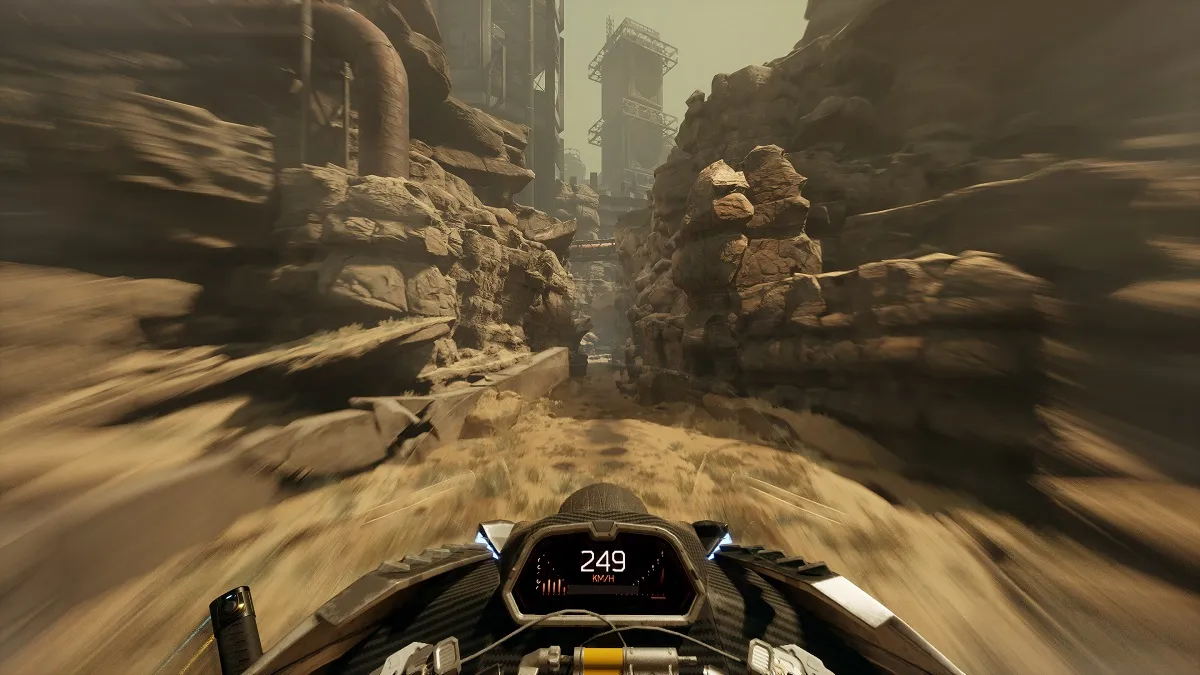
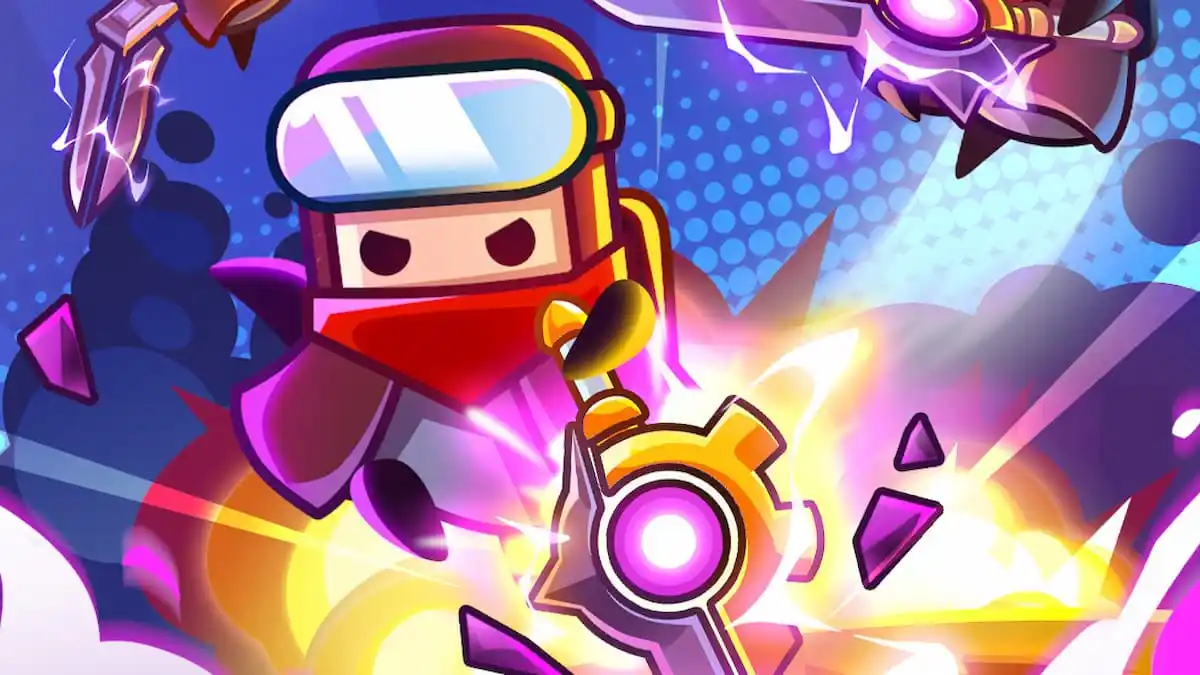


Published: Oct 23, 2023 10:00 am